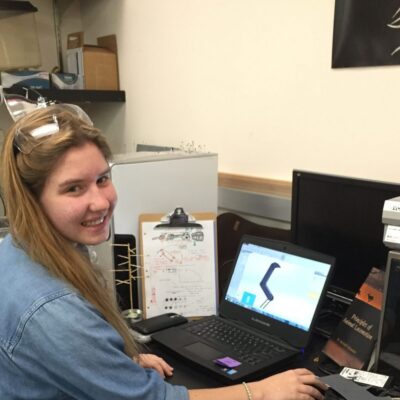Nicole Greene Rose Hills
Robotic Model to Investigate Crab Burrowing
By understanding how physiology, behavior and the environment all contribute to animal multifunctionality, we can better understand animal motion and translate these discoveries into new technologies in the fields of robotics, prosthetics and rehabilitation. Ghost crab (ocypode quadrata) burrowing is particularly valuable for understanding multifunctional appendage design. To access burrowing data (like forces produced by the crabs legs, the effect of the crabs motion and the importance of the crabs anatomical features) and systematically vary them, I am constructing a robotic model based on actual ghost crab appendages. Robotic models and engineering methods similar to those I am employing have a long history of supporting biological research. These models not only offer new insights into animal biomechanics but can also lead to entirely new robotic technologies.
Message To Sponsor
I am grateful to the SURF program and the Rose Hills fund for giving me the ability to deeply pursue my research over the summer, when I can fully engage with it without other commitments to classes. The opportunity provided to me by SURF allows me to both explore and progress a field I am excited and passionate about. Bio-inspired robotics is one of the fastest-growing topics in robotics. It is my belief that robotics will play a strong role in affecting the future of the human condition for the better, and with better-designed robotic systems, advanced and efficient robotic technologies can become more attainable on a widespread level. It means the world to me that I can personally contribute to this progress, especially at such an early point in my life as my undergraduate college career.